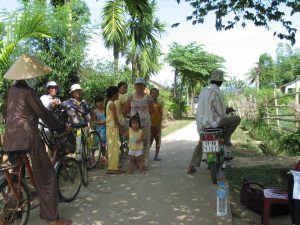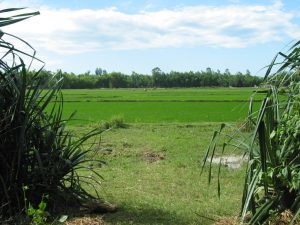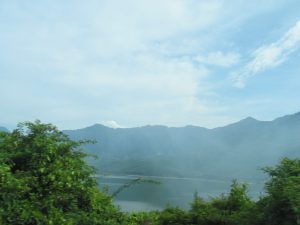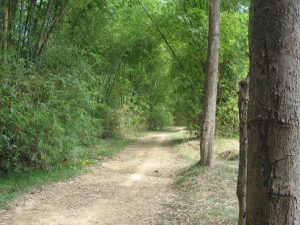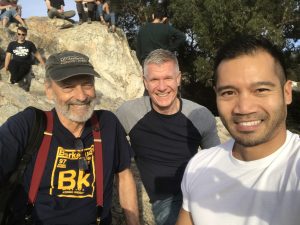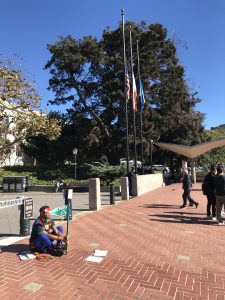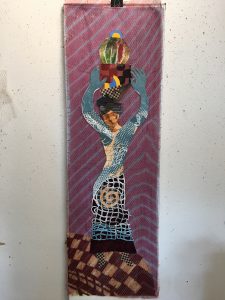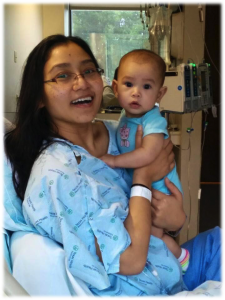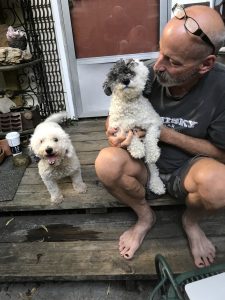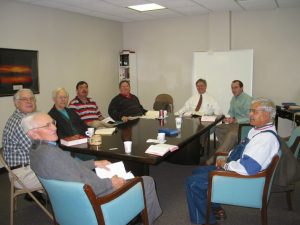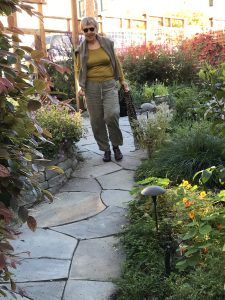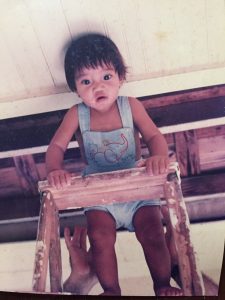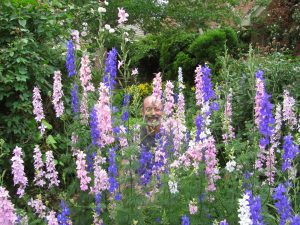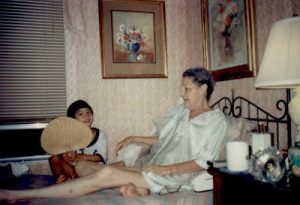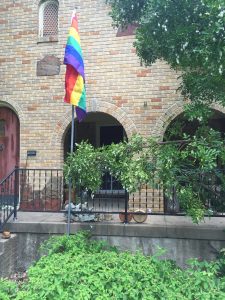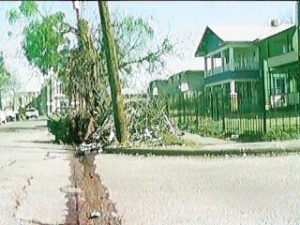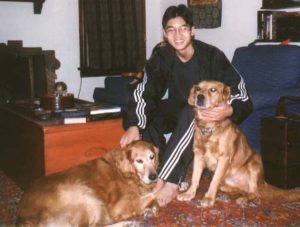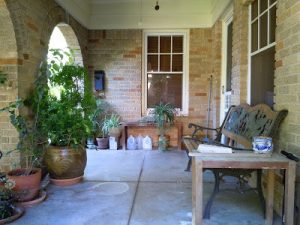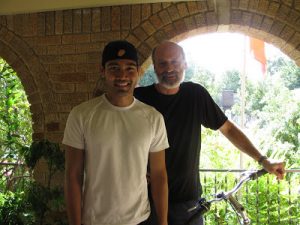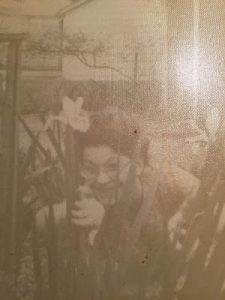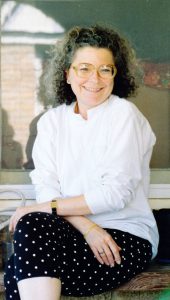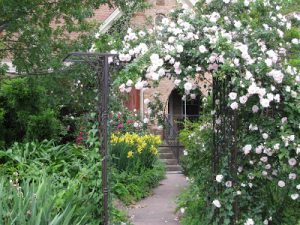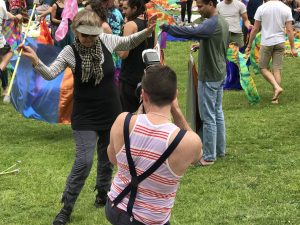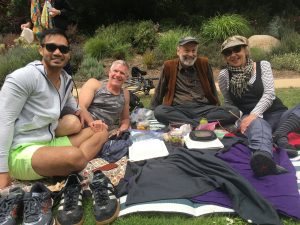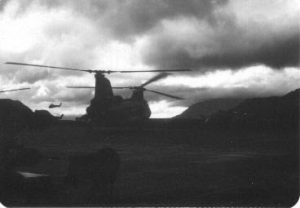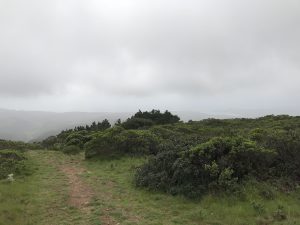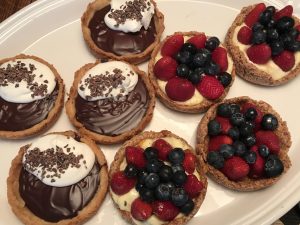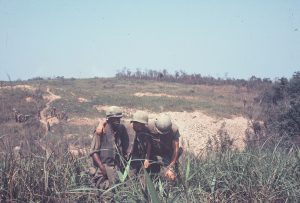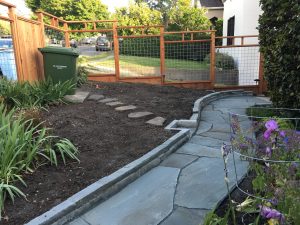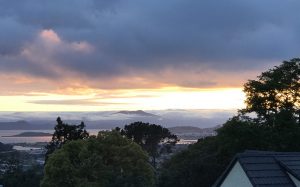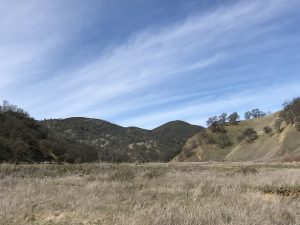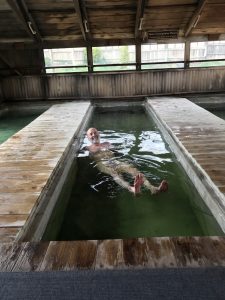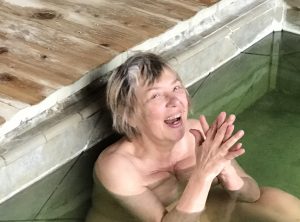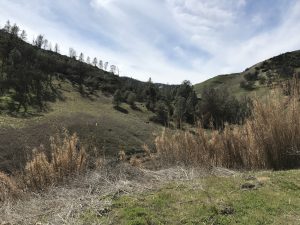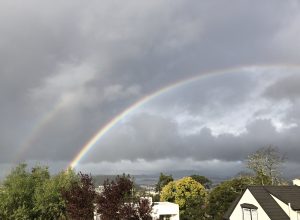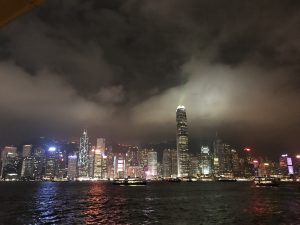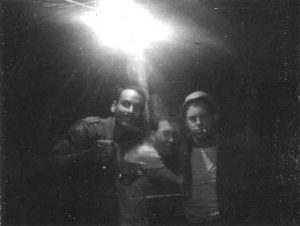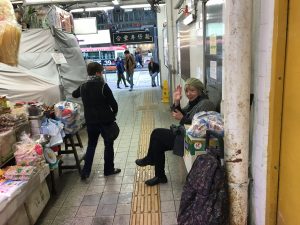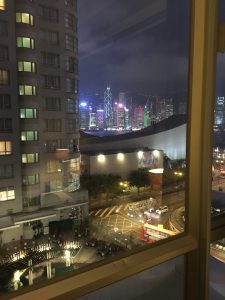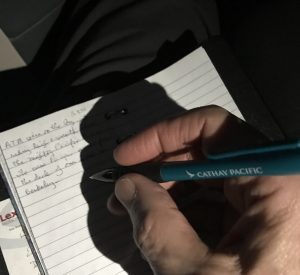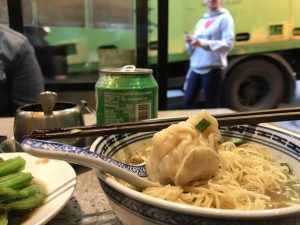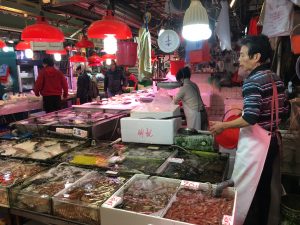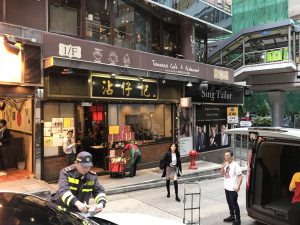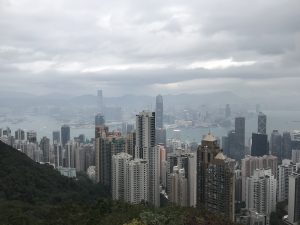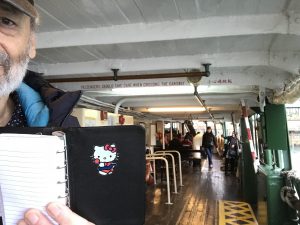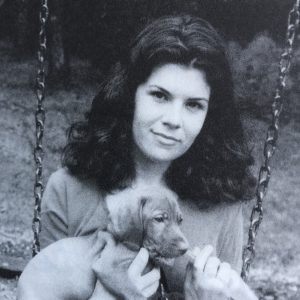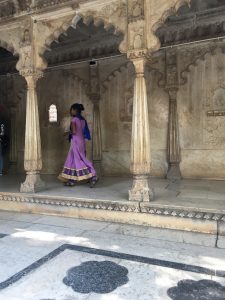
At palace in Udaipur (photo by Jean Cacicedo)
Hong Kong to Delhi – another easy flight in Cathay Pacific business with good food, quiet cabin, lying down, sleeping – what a way to travel!
Delhi airport – easy immigration and no security slowdown for foreign elders. Then taxi chaos and a wild ride in a tiny rattling van to our hotel near the airport in the dystopian smog of Delhi. I’ve never seen smog like this. I’m starting to react – “reactive airway” is the perfect description and diagnosis. Cup of chamomile tea and sleep with dreams. In the morning, Delhi airport domestic departures OMG a true sea of humanity, but everybody behaving and the line moving pretty good and before long taking off in morning smog just like the night smog. Got a cough and wheezing going on.
Udaipur: another crazy taxi ride beep beep beep. In California, motorcycles go between lanes of cars; in India, cars go between lanes of cars. The taxi stops before the hotel as streets are too narrow for cars. Onward via tuk tuk and now here we are at Amet Haveli, a “heritage hotel.”
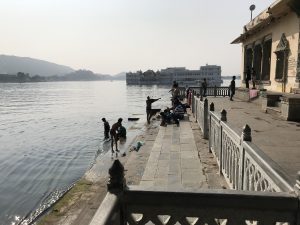
Hanuman temple Udaipur
Ahhh, now we’re truly in India and the first part of the trip is over! The Amet Haveli is very nice, old-fashioned, luxurious. Time to hit the streets – narrow lanes, barely enough room for a tuk tuk, and when you add Jean or me, someone has to yield, and it won’t be the tuk tuk. Yikes! Intense!
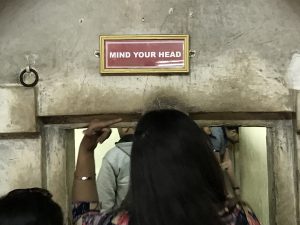
Mind your head, she said
The next day we’re back on the streets, walking to the City Palace – it’s rural kids field trip day at the Palace with crowds of students filling the halls and rooms. We’re sitting on a ledge and a crowd of 10-11 year old boys starts crowding around us, staring, seemingly mystified, some smiling, some just staring, crowding closer and closer until they’re too close for (our) comfort and we split, up stairs, narrow corridors, doorways (“Mind Your Head”), small rooms, down stairs, narrower corridors, and all the while b
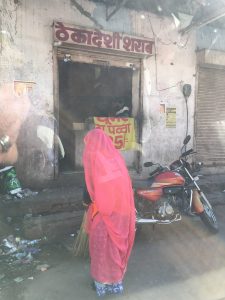
Photo by Jean.
ody space closer than what we’re used to – bring it on!
We had dinner on the hotel lake terrace. Great food. Went for a walk after dinner, along dark alleyways, opening on to a temple for Hanuman and here is a smaller shrine to Hanuman with two men inside. One man steps outside and the other man says to me, “Do you want to know about God?” “Sure! Is this for Hanuman?” “Yes – here,” he says, offering me and the other man a bite from the offering he was making. “Thank you. What should I do?” “Eat.” “Okay.” And I take the bite, offering it to Hanuman and David Overton.
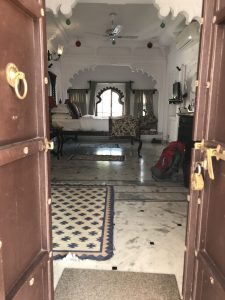
Our room in Udaipur
In the morning, sunrise over the lake and Palace, making love in the early light.
We take a car from Udaipur to a village, Narlai. On the way we stop at a Jain temple in the middle of nowhere. It’s a marble wonderland, with endless carved columns and rooms and domes. Onward to Narlai, where we have a reservation at another heritage hotel, Rawla Narlai.
Here we are at the most opulent place I’ve ever stayed. Our suite has a terrace on the manicured lawns, marble floors, and on our jukebox, a mix of Grateful Dead, Chopin, Brandy Carlisle, Jerry Lee Lewis (has Jerry Lee ever been heard in this place?).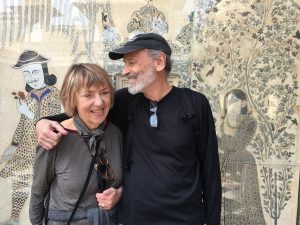
At night we meet two other couples for wine and then a ride in bullock carts (two people/cart) through narrow village streets and into the very dark countryside – see the stars! I recall the first time flying over India at night where it was all completely black, black as black, and occasionally a sprinkle of lights where there was a city with electricity. Now there is electricity almost everywhere.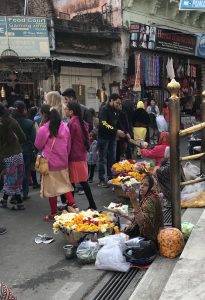
When we were almost to our destination there was a fire by a 20’ high rock by the road and an almost naked sadhu standing there blowing a little horn and soliciting baksheesh, which we gave, which elicited more excited horn-blowing. Ahead were 100s of candles and lanterns and the step well (a hole in the ground about 75 yards on a side and 50 yards deep). There was a man part way down strumming a string instrument and shaking cymbals and singing – home-grown trance. Good food, good times.
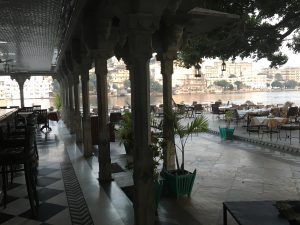
Hotel restaurant Udaipur
In the morning, lying in bed talking about intimacy and what happens when we die. Will we ascend like sparks of light to join with all the other lights of those who went on before – unimaginable Union!? Will we be united with loved ones who’ve gone on before with our consciousness and identity intact, i.e., “me,” “you,” “her,” “him?” Will we just cease?
Whatever the case may be, it’s our homegoing and we’ve lived enough, suffered enough, loved enough that whatever, we embrace it. Oh Life! It hurt so much and now our happiness and all else embraced. This is the train. Complete.
Some food:
Curries
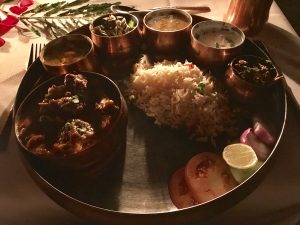
Thali in Narlai
Bharwan tandoori aloo
Mint raita
Garlic naan
Chicken soup
Pakora
Thalis
Khozi kozambu
Lahsumi palak (spinach)
From Narlai we took a car to Jaipur – a five hour ride, including a stop at a fantastic Jain temple in the middle of nowhere. Guy offered to say a prayer for us, which we declined as it was a hustle. Onward, through troops of long-tailed monkeys sitting on stones
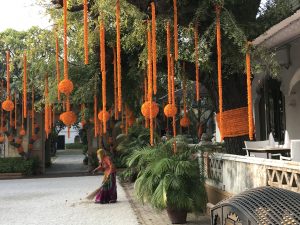
Marigold deco in Narlai. Getting ready for a party.
beside the road. Someone in a people’s bus ahead of us threw some bananas out the window and monkey-shines ensued. Otherwise it was an uneventful trip.
Jaipur – oh my, more urban chaos, but not near as polluted as Delhi. I’m coughing and wheezing more than before, so we stop at little pharmacy to buy an inhaler. I’m thrilled to find exactly what I wanted: an inhaler with levalbuterol and beclamethasone. Puff-puff.
We stayed at the
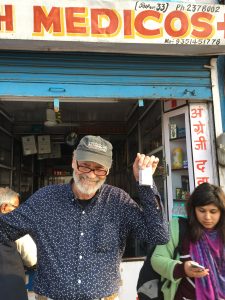
Not a bad pharmacy in Jaipur (photo by Jean)
Arya Niwas, a mid-range hotel recommended by Jean’s friend, Sophina. It was “an oasis in a sea of chaos.” Nice room, nice staff, decent food, good breakfast buffet.
On our first full day in Jaipur we went to a nearby town to visit Jean’s friend, Charlotte, who deals in textiles (see https://maiwa.com/). Traveling now is much like the last few times Leslie and I went to Southeast Asia: everything seems to take so much effort that we basically do one thing/day other than be, eat, sleep, and so on.
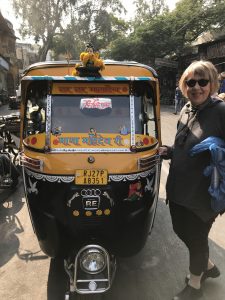
Tuk-tuk girl
Somewhere along the line we began experiencing GI issues. Was it the soup? The ginger drink? The hummus? Who knows? Jean kept on trucking while I laid up at the hotel. She had some misadventures at the Pink Fort and good times at a museum.
Dancing in the hotel (however briefly).
Winding down. Trying to figure out what next – Goa vs. Dharamsala? Both lead through Delhi twice and though I’m wheezing less, I’m not 100%. Then there are the GI issues. In the end we decided to come home early – a great decision.
We took a car Jaipur to Delhi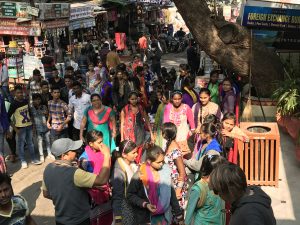 – about five hours past endless iterations of the same shops, cafes, cows, trucks, buses, etc., etc. The lounge at the Delhi airport was perfect: nearby workers were cutting metal with a power saw – RRRRRRR, Screeeetch, the smell of hot metal… sigh. On to HK for a 6 hour layover, but we found a couch to lie on. Feeling marginally better. Nice, clean, quiet airport. Easy, long flight. Both of us very tired, still with GI problems.
– about five hours past endless iterations of the same shops, cafes, cows, trucks, buses, etc., etc. The lounge at the Delhi airport was perfect: nearby workers were cutting metal with a power saw – RRRRRRR, Screeeetch, the smell of hot metal… sigh. On to HK for a 6 hour layover, but we found a couch to lie on. Feeling marginally better. Nice, clean, quiet airport. Easy, long flight. Both of us very tired, still with GI problems.
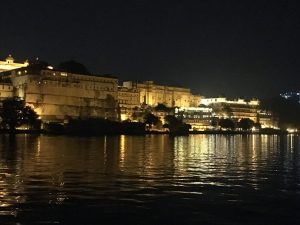
Night view from our room in Udaipur
Random thoughts:
Independent travel in India is probably best done when younger. It’s a very challenging place, even with staying in nice places and comfortable flying.
We’re both good travelers, good attitudes, good communications, and that feels good.
Based on how I feel now (home for a week and today was my first day of feeling physically well all day), our decision to leave early was clearly the best decision.
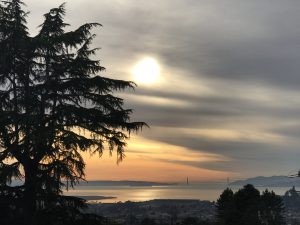
Sunset today, 1/29/2018, Berkeley California.
